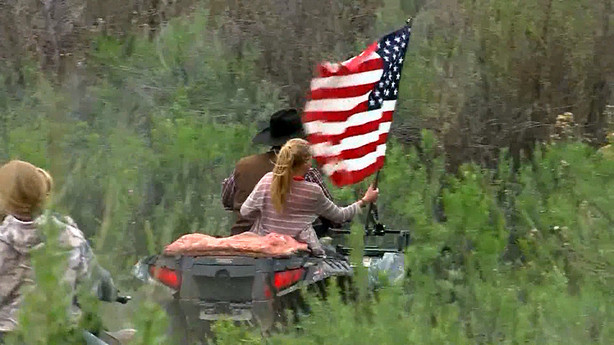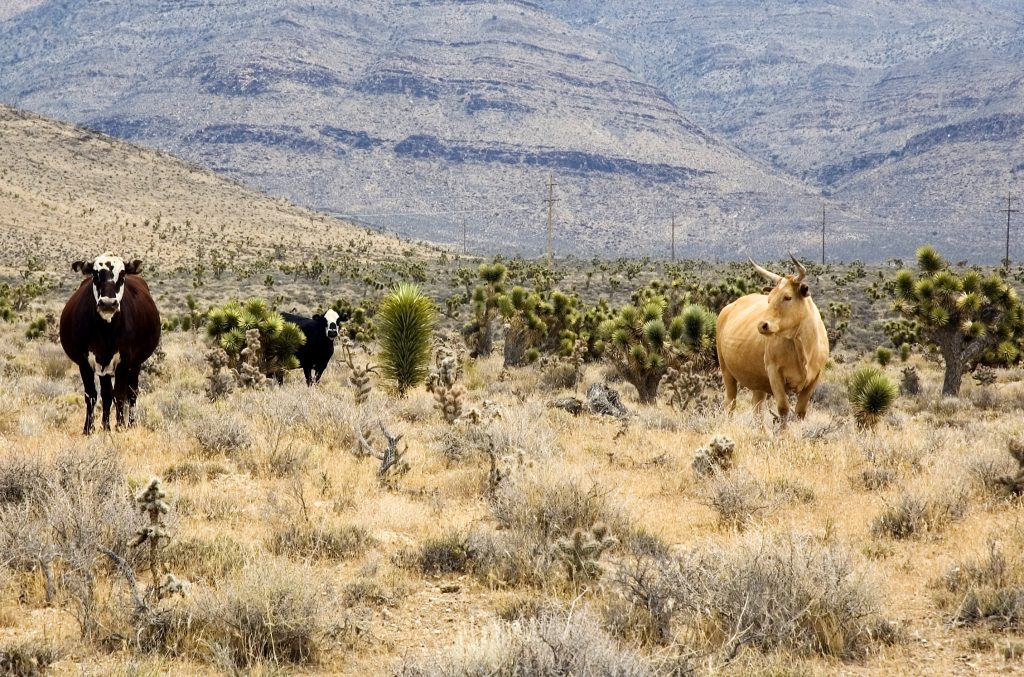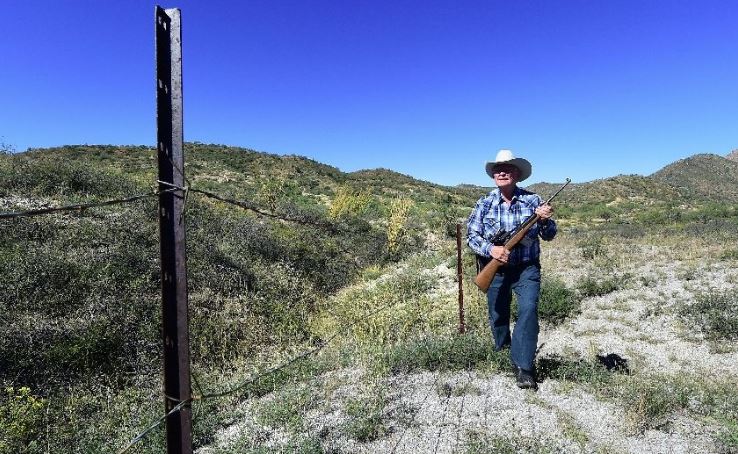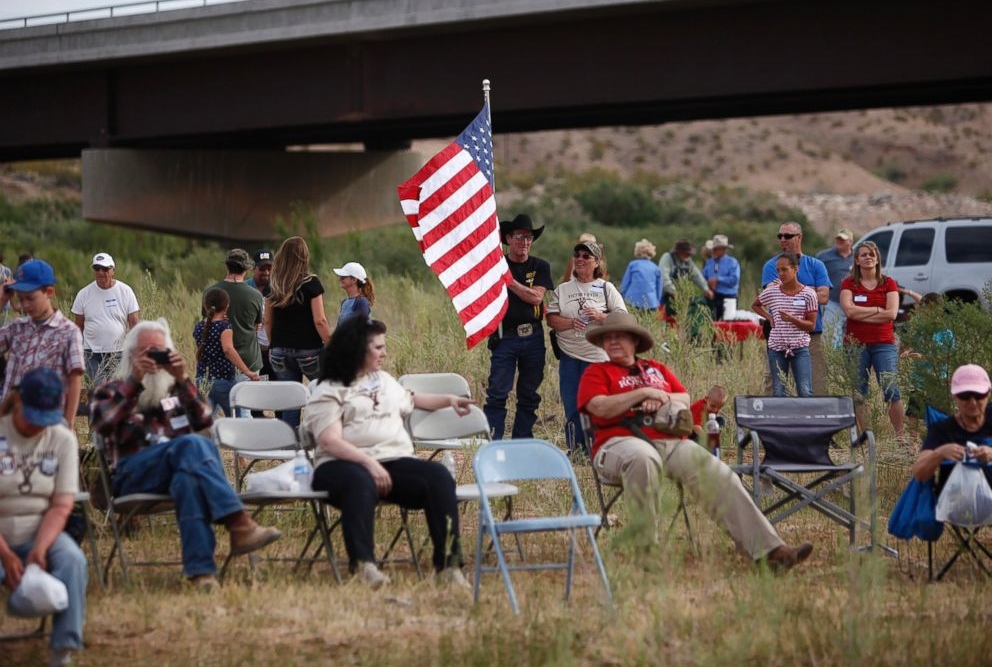“Recreation on public lands is a big part of what we do at the Interior Department and the BLM, but for many persons with disabilities or for people who just don’t get around like they used to, our public lands aren’t accessible without motorized vehicles. Allowing ATVs and other vehicles in Recapture Canyon will open up opportunities for people to enjoy our public lands while still protecting the cultural and natural resources that make the place special.”
by Marjorie Haun
Recapture Canyon, lying immediately east of Blanding, Utah, is rich in both historical significance and natural resources, and has been the the setting for clashes between locals and the feds over the same. But, under the new Department of Interior Secretary, Ryan Zinke, this region may be getting a reprieve from a Bureau of Land Management run amok.
On Monday, April 10, the Department of Interior released the following press release:
MONTICELLO, Utah – U.S. Secretary of the Interior Ryan Zinke and the Bureau of Land Management (BLM) today announced expanded recreation opportunities for motorized and non-motorized trails in the Recapture Canyon area located in San Juan County, Utah. The travel management plan includes nearly 7 miles of all-terrain vehicle (ATV) and/or traditional vehicle access to this area while protecting important archaeological sites and natural resources.
“Recreation on public lands is a big part of what we do at the Interior Department and the BLM, but for many persons with disabilities or for people who just don’t get around like they used to, our public lands aren’t accessible without motorized vehicles,” said Secretary Zinke. “Allowing ATVs and other vehicles in Recapture Canyon will open up opportunities for people to enjoy our public lands while still protecting the cultural and natural resources that make the place special. On my first day in office I prioritized public lands access; I’m happy to continue that mission.”
Recapture Canyon is home to cliff dwellings of the ancient Pueblo peoples that were built more than 800 years ago. These archaeological sites and related artifacts are essential to understanding the story of the earliest inhabitants of the American Southwest. Additionally, Recapture Canyon contains important habitat for animals, including sensitive riparian areas for the endangered Southwestern willow flycatcher and crucial winter range for mule deer and Rocky Mountain elk.
Recognizing how important the area is for motorized recreation, the BLM approved the use of a system of trails at the north end of the canyon near Recapture Dam and above the canyon on the west rim for ATV and full-size vehicle use. A total of 6.8 miles of motorized trail has been designated, including 5.6 miles specifically for ATVs and 1.2 miles to accommodate full-size vehicles. The new designation enhances the already extensive network of motorized trails including more than 31 miles of ATV-specific trails with just over 2,800 miles available for motorized use in the BLM Monticello Field Office area. Visitors to Recapture Canyon will continue to enjoy horseback riding and hiking to explore and learn about the cultural resources unique to the area.
The BLM had previously closed 1,871 acres of the Recapture Canyon area to motorized vehicles due to damage caused by unauthorized trail construction and damage to the archaeological sites. This new decision will lift the closure order within the area. Trail design and other measures highlighted in the decision were incorporated to restore and protect archaeological sites and natural areas important to wildlife.
The BLM is committed to increasing recreational access to public lands across the country and will continue to work with the OHV community and other recreational groups in the Recapture Canyon area to enhance opportunities for responsible recreation on our public lands.
The Decision Record, environmental assessment, maps, and other supporting documents can be found on the project page at BLM’s ePlanning website: http://bit.ly/2mWVCV8.
Background
Although the Recapture Canyon area is managed in-part by the Bureau of Land Management (BLM), the road into Recapture is an historical county road, traveled regularly by motorized vehicles for monitoring the creek and maintaining the dam located in the canyon.
Traditionally the road into Recapture Canyon was a multi-use trail, favored by off-highway vehicle (OHV) users, as well as hikers, horsemen and bicyclists. But as environmentalist groups became more active in the region, BLM restrictions on multi-use grew increasingly stringent.
Phil Lyman, a firebrand San Juan County commissioner, became the point-man for the locals who found themselves at odds with the rigid federal agency. The BLM Utah office and its regional subsidiaries had then formed alliances with extreme green groups such as Southern Utah Wilderness Alliance and Friends of Cedar Mesa. New BLM regulations had been formulated by these environmentalist NGO’s, against which Utah locals had little or no recourse.
In 2007, according to the Recapture Institute website, the BLM “arbitrarily” closed the road into Recapture Canyon. At the time, citizens of San Juan County tried to work with the local BLM field office to clarify its rules and set the record straight regarding who had authority to close public roads in the canyon. According to the website:
After seven years of pleading and petitions to the BLM by local government and citizens alike, Commissioner Lyman called a town hall meeting to discuss what action should be taken on the part of San Juan County. It was suggested by two men that a protest be carried out on the road. From that February 27th meeting up until May 10th, Commissioner Lyman informed and consulted with all parties and organizations that would be interested or affected by this action. Permission was obtained to hold the protest on a county pipeline road. Commissioner Lyman expressed several times his desire to avoid the protest and simply dissolve the stalemate between San Juan County and the BLM. After giving the BLM every chance to work with the county, the protest was indeed carried out on May 10th. An excursion was made into the canyon on a one-mile stretch of county claimed, owned, and maintained pipeline road. There was no conflict and the event was peaceful. Commissioner Lyman emphasized the importance of not going beyond that pipeline road at the pre-protest rally and he and his followers did not cross that line.
Phil Lyman headed up the controversial 2014 ‘Freedom Ride’ in Recapture Canyon and in so doing became an instant outlaw to the feds. A year after the peaceful excursion into recapture a jury in Salt Lake City convicted Lyman, and Monticello blogger, Monte Wells, of conspiracy, based on evidence gathered by undercover BLM agents and environmentalist activists who infiltrated the event. Lyman and Wells were successfully prosecuted by the feds and Lyman was fined for nearly $94K for alleged damages to the trail. Both men were also sentenced to short stints in federal prison.
Despite efforts by the BLM and Utah’s extreme environmentalist to crush local opposition to federal restrictions and land grabs, leaders and activists in San Juan County persisted. Today, they have taken up the cause of rescinding Obama’s 1.35 million acre Bears Ears designation. With the help of Utah’s conservative Congressional Delegation, they have gained the attention of President Trump and his new Interior Secretary, Ryan Zinke. It appears that the struggles of San Juan County’s courageous citizens are beginning to pay off.




